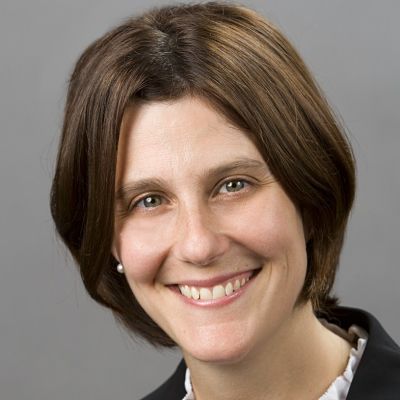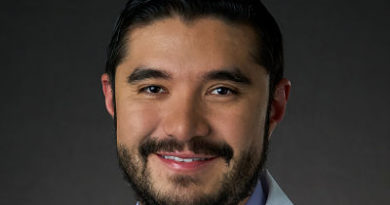Extending health care into the home via connected caregivers should be a national priority
By Elise Singer, MD MBA, Chief Medical Officer, CareLinx
Millions of our declining elderly need help in the home and 90% want to remain home to the end of life
According to Health Affairs, nine million community-dwelling Medicare beneficiaries—about one-fifth of all beneficiaries—have serious physical or cognitive limitations and require long-term services and supports (LTSS) that are not covered by Medicare. Nearly all have chronic conditions that require ongoing medical attention, including three-fourths who have three or more chronic conditions and are high-need, high-risk users of Medicare-covered services.
Unless the elderly are in poverty the government offers no in-home aid. Medicaid covers LTSS for very low-income Medicare beneficiaries, but only one-fourth of Medicare beneficiaries with serious physical or cognitive limitations are covered by Medicaid.
There is a known correlation between avoidable high medical spend in the elderly with significant cognitive and physical limitations. This gap in Medicare services leads to avoidable emergency department visits and hospitalizations and increases the risk of older adults’ ability to live independently leading to institutionalization in long-stay nursing facilities, which is paid by Medicaid. Consequently, costs often eventually simply swap government spending buckets.
Importantly, 90% of patients also prefer to remain at home through the end of life.
It’s complicated
It seems straightforward, if our health system could provide affordable supportive care in the home through non-skilled caregivers who also are enabled to pass on targeted, actionable information vital to optimal medical care, everyone would win. The elderly could remain at home and be happier, their health outcomes would improve and there would be fewer avoidable ED visits and hospitalizations. Fewer admissions provide governmental savings, whether Medicare or Medicaid, offsetting the cost of non-skilled caregiver services.
However, it is not straightforward. First, we will need to have 3 key components in place nationally: appropriate payment channels and incentives, system preparedness and a sufficient workforce.
Payment
Needless to say, payment in health care is complicated by 3rd party payors, governmental involvement, lack of transparency due to contractual obligations and multiple key providers along the continuum of healthcare settings, and realities created by historical developments. Nevertheless, there are new federal rules expanding the definition of “primary health-related” benefits for Medicare Advantage plans beginning in 2019 that can allow for the coverage of the cost of non-skilled in-home caregivers.
The system
The most underrecognized complication is our healthcare system readiness itself.
Healthcare is like air travel at the busiest world airports. Almost around the clock, there are airplanes arriving and leaving every minute, a multitude of airlines, different languages spoken by pilots, 10s of runways, and unpredictable variables like weather. And mistakes can quickly lead to death. The right information at the right moment must be delivered to the right person. It works through a well-defined and coordinated interplay of highly educated people making decisions based on information given to them real time by technology systems crunching vast data sets based on algorithms and prioritizations. The system has been built over decades, iterated on for efficiency and has many interlocking systems and dependencies.
Healthcare systems are also a well-defined and coordinated interplay of highly educated people making decisions based on information presented to them real time by a system of integrated technology systems. The system is simultaneously efficient and complicated.
It is clear that doubling the incoming flight volume or adding in helicopters, that have a completely different landing pattern, couldn’t be successfully accomplished without significant planning. The systems need to accept or integrate the new data stream and the air controllers need to know what information is relevant and how to react based on that information.
Today, in healthcare, 95+% of a patient’s time is spent at home, or outside of medical interactions. Yet there is little data from this “home setting” to the healthcare systems or professionals. With a few exceptions, all of health care data in existence today comes through outpatient physician visits punctuated by data from high acuity settings or through informal means. Some patient-reported data from the home setting is occasionally shared, typically in paper format during a medical appointment on paper or visually noted by the nurse or doctor from the patient’s smartphone. This data doesn’t reliably enter the medical record in a discrete usable fashion.
In order for data from the “home setting” to be ingested by the healthcare system, it must be relevant, dependably accurate and timely and the health system must be able and prepared to receive it.
Workforce
Lastly, we need a sufficient supply of trustworthy in-home workers along with visibility into their hours and actual work. Issues of worker availability, accountability and reliability as well as dependable and defined mechanisms to guard against fraud and abuse are critical. Sufficient wage levels according to local markets are critical to maintaining this workforce.
The next step
Extending health care into the home via connected caregivers should be a national priority. Huge majorities of people strongly prefer to age in place, there isn’t sufficient national infrastructure to institutionalize seniors in need of functional support and it is unsustainable financially privately and publicly. Perhaps most importantly, health outcomes could improve while overall health spending decreased: connected caregivers can improve preventive care in the home through scripted prompts, provide thoughtful functional support in the home and send real-time medical data that is monitored by skilled healthcare resources leading to timely intervention opportunities and fewer avoidable hospital admissions.
With the 2018 Medicare Advantage programmatic supplemental benefit expansion, the necessary payment reform has taken an important step forward. When offered to the appropriate patient segments coupled with proper pricing, functional caregiver support tied into the medical system should be expanded to the entire Medicare population.
The caregiver workforce is readily available in most parts of the country, whether engaged informally or formally. Several franchised businesses and a marketplace offer successful channels to support an expanded need for in-home support.
In order to accelerate the health system readiness process, “connected caregiver” service lines in existence today offer a supply of high quality, trained caregivers coupled with a HIPAA compliant technology platform built for this use that can integrate with hospital and payor technology systems.
It is time to truly extend health care into the home through an affordable connected caregiver workforce deeply integrated into our medical system.



